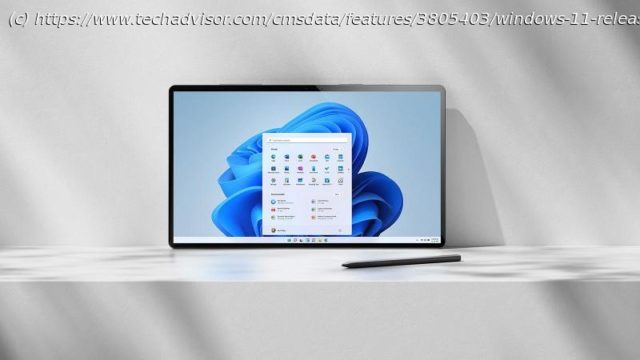Windows 11 is arriving in just a few days, bringing big changes from Windows 10. Here’s what you need to know about its release date, cost & features.
Although it was leaked before the official announcement, all the key details about Windows 11 were announced on 24 June, in an emotional livestream fronted by Microsoft’s Panos Panay. All the details, that is, except for its release date. But now, in a blog post, the company has revealed that it will be available from 5 October 2021. The post explains, though, that you won’t necessarily be able to get it on that date: » Following the tremendous learnings from Windows 10, we want to make sure we’re providing you with the best possible experience. That means new eligible devices will be offered the upgrade first.» In other words, Microsoft doesn’t want a repeat of the Windows 10 rollout where some apps and hardware simply didn’t work with the new OS and caused plenty of grief. This time around, the rollout «will be phased and measured with a focus on quality». The company says it expects all eligible devices to be offered the free upgrade by mid-2022, and that it will use ‘intelligence models’ that consider hardware, reliability metrics, age of device and other factors. Don’t be surprised if you don’t see a pop-up giving you the option to upgrade from Windows 10 on 5 October. That’s also when we’ll see the first devices running Windows 11 out of the box. That’s Surface Pro 8, Surface Laptop Studio, Surface Go 3 and Surface Pro X (2021) in the US, but we’ll have to wait longer for these devices in other territories. The Honor MagicBook V 14 arrives a day later, but only in China for now. Clearly wanting to avoid upsetting millions by making radical changes (as it ultimately did with Windows 8), Microsoft has kept the same basic layout, albeit with a significant redesign. You’ll also find rounded corners everywhere you look and a new centrally positioned Start Menu, although you can return the latter to the side if you’d prefer. There’s a new widgets panel which can show the weather, stocks, news and other things — seemingly replacing the old Start Menu’s live tiles — and improved grouping and snapping of open Windows so you can focus more easily on what you’re trying to do. Windows 11 on tablets is much improved thanks to the introduction of gestures and a new on-screen keyboard that much more similar to the one on your phone. You can even install and use Android apps, via the Amazon Appstore, but that won’t be available at launch. But while there are lots of visual changes, Windows 11 should be an easy transition from Windows 10 for most people. At the launch event, Microsoft confirmed that Windows 11 would begin rolling out «this holiday». The US holiday season typically refers to the period between Thanksgiving in late November and the New Year, but in tech spheres October is usually included too. And as you know if you didn’t skip straight to this section, the official rollout will begin on 5 October.






